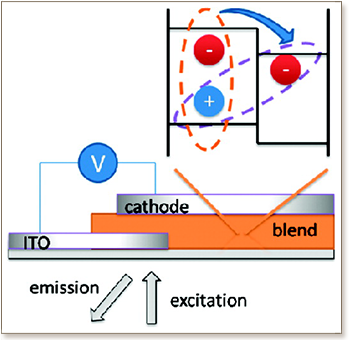

A bulk heterojunction system consisting of a soluble poly(p- phenylenevinylene) donor and a small molecular electron acceptor based on Vinazene (2-vinyl-4,5-dicyanoimidazole) has been investigated with respect to the correlation between field-induced emission quenching and free charge carrier formation. Transient and steady-state emission properties measured at different voltages indicate that emissive charge transfer (CT) excitons formed at the heterojunction are prone to direct field-induced dissociation. However, the split-up of these CT excitons cannot fully account for the photocurrents observed on the very same devices. It is proposed that the formation of free carriers involves a nonemissive precursor and that the recombination of this precursor does not proceed via the formation of CT excitons.
DOI: 10.1021/jz100121t

"KAUST shall be a beacon for peace, hope and reconciliation, and shall serve the people of the Kingdom and the world."
King Abdullah bin Abdulaziz Al Saud, 1924 – 2015
Thuwal 23955-6900, Kingdom of Saudi Arabia
© King Abdullah University of Science and Technology. All rights reserved